#dwarfland
Explore tagged Tumblr posts
Text

this image is incredibly funny to me
345 notes
·
View notes
Text
🎁🎉🎂Happy Birthday Harlequin!🎂🎉🎁
Last year I designed an outfit for him, and I intend to do that this year as well, but since it took me till the 27th to finish Elaine's(her birthdays was the 15th) I'm not super confident that I'll have that finished on time. If I do, you're probably looking at that right now, but if not! Then at least this will be out on time.
Well that didn't work... My sleep schedual betrayed me and I didn't even get this posted on time... I meant to take a nap. I set 3 alarms. Did not work. Slept for 15 hours...
Anyway, this year, along side the outfit design, I'll also be doing an analysis that I've been wanting to do for quite a long while.
A name analysis!
Most of the characters in The Seven Deadly Sins -at least the important ones- have names relating to Arthurian myth, as the story is kind a based in it. But this, oddly enough, doesn't apply to almost any of the Fairies, even Harlequin -AKA "King"- despite him being one of the titular characters.
Meliodas and Ban are the fathers of two of Arthur's knight, Tristian and Lancelot respectively, Merlin is Merlin, iirc there are two different Escanors depending on the story, and Gowther is...apparently Merlin's half-brother according a glance at google... Diane's namesake is a little harder to track down, but she's not directly Arthurian either from what I can gather. As far as I know the only Fairy who does align with Arthurian myth is Elaine, but the Elaine that's Ban's wife is not the only Elaine you'll find in Arthurian stories, it was a common name.
Anyway
Most people know the word "harlequin". Simply put it's a french clown.
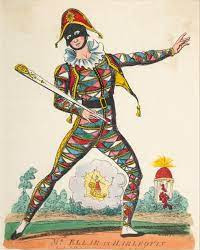
-Oh and apparently also a duck XD
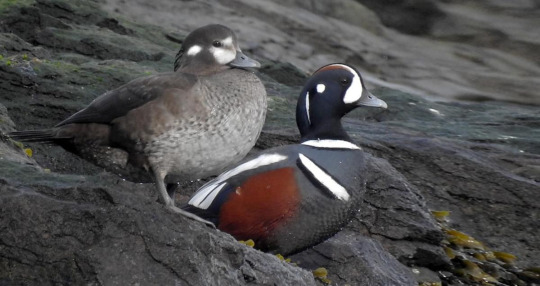
BUT
Not everyone who knows that, knows where the word comes from, or what the king of the Fairies would have it for a name.
The origin of the word is actually a lot older than the french clown concept and isn't actually french all the way back. here's what Google has to say;
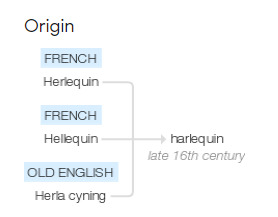
"late 16th century: from obsolete French, from earlier Herlequin (or Hellequin ), the name of the leader of a legendary troop of demon horsemen; perhaps ultimately related to Old English Herla cyning ‘King Herla’, a mythical figure sometimes identified with Woden."
I actually learned this from a youtube video some years back, by Overly Sarcastic Productions. It's a Halloween episode discussing the concept of the "Wild Hunt". I highly recommend the video and the channel as a whole, they're really great, very funny and you learn a lot. The video is a little under 17 minutes long, though, so if you're only interested in the part relevant this analysis jump to 11:05 in the video.
For anyone who doesn't want to watch that and would rather read me summerize it, in the video it's explained that the Scandinavian version of the Wild Hunt is called "Odin's Hunt" but in Old English it's called "Herlaþing" which means "Herla's Assembly". Herla being a King of the Britons who makes a deal with a dwarf where the two attend each other's weddings. The dwarf is a perfect guest at Herla's wedding and the following year Herla goes to the dwarf kingdom to return the favor. When he leaves the dwarf gives him a hunting dog and warns him not to get off his horse till the dog does. When they get back the dog doesn't get off the horse, Herla asks a random person they pass how his wife is doing only to find out that 3 days in dwarfland = 300 years in humanland. Some of his men are shocked and get off their horses, only to age to dust when they touch the ground, so Herla is stuck riding his horse for eternity.
The concept of an eternal wander was popular and in the 11th century a french monk/chronicler used the phrase "Familia Herlequin" to describe a host of demons pursuing a monk, lead by a masked giant. This masked hunt leader would evolve into the character we now know as a "harlequin", a trickster character is french passion plays.
God, king and trickster presented as a fool, that actually kinda tracks, doesn't it?
And that, is why the king of the Fairies is named Harlequin.
#seven deadly sins#nanatsu no taizai#four knights of the apocalypse#mokushiroku no yonkishi#7ds#nnt#4kota#7ds fairy#nnt fairy#4kota fairy#7ds king#nnt king#4kota king#fairy king harlequin#7ds analysis#nnt analysis#4kota analysis#etymology#what even is time T-T
26 notes
·
View notes
Text
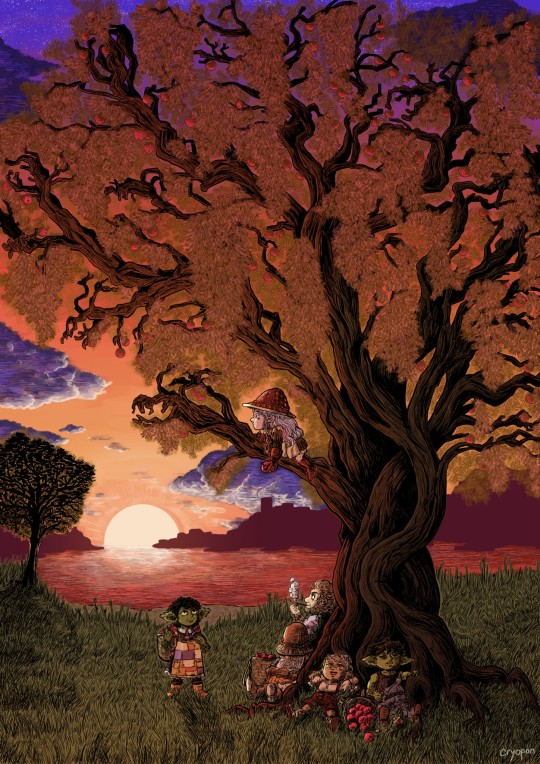
"Feyfolk in Hesperis"
I'm attending an indie comic event in Zwolle, Netherlands tomorrow to sell stuff too. Managed to finish the goblin comic too, titled "Grand Tour in Dwarfland"
#fantasy#hesperides#poster#digital art#sunset#tree#hesperia#digital illustration#my art#fey#goblin#gnome
11 notes
·
View notes
Text
tag navigation
— general
#nom nom -> like an npc that won't stfu... #om nom -> asks
— streamers
#s: pretty fly for a white guy -> ludwig ahgren... #s: secret popmart -> quarterjade #s: in the mirror i see you (fellow adhd guy) -> itzmasayoshi #s: Youtuber Serial Killer Late Streamer Local Funny Man E-Clown Air-Cannibalist Master of Illusions Confirmed All-powerful God Two Time VineWrestle Champion by technicality No. 1 on the IRS's most-wanted list The Comedy Guy Shortest man in Dwarfland The only human who can make Zeus think twice The ultimate alpha male Compact Streamer Him The Sus Guy Nextbot -> do i even need to explain (jerma985) #s: like a good munch on a carrot -> tinakitten #s: ipad kid time -> otv #s: snorking time -> the yard #s: technoblade never dies -> techno
— fire emblem three houses
#vg: is it a prayer or battle cry? -> fe3h #ch: to reform and unite -> claude #p: never a believer until you -> claudeleth #ch: to break and crumble... then rise -> dimitri #ch: to fix and absolve -> edelgard #p: i serve you purely out of personal devotion -> edelgard & hubert (not romantic tho... sry)
— baldur's gate 3
#vg: to the gate -> #ch: a bundle of night orchids ->
— ace attorney
#vg: objection! -> aa #ch: cerulean wool -> phoenix wright #ch: scarlet wool -> miles edgeworth #p: thanks to you, i am saddled with unnecessary… feelings -> narumitsu
— octopath traveler 2
#vg: a web of journeys
— valorant specific
#vg: to capture radianite -> valorant #ch: i am the beginning. i am the end -> omen
— general video games
#vg: wishing on starfruits -> stardew valley #vg: coming back to faraway town -> omori #vg: poyo -> kirby #vg: i choose you -> pokemon #vg: YOU BURNED MY HOUSE TO THE GROUND (pikmin) MY FAMILY’S DEAD WHAT DO I DO (pikmin) -> pikmin
— dsmp specific (ehem)
#rp: the unfinished symphony -> dsmp #ch: there’s no other way—i choose blood -> c!techno #ch: welcome home theseus -> c!tommy #ch: i’m not a pawn -> c!tubbo #p: discs aren’t people -> c!clingy duo (tommy & tubbo) #p: our perfect world is one without a ruler -> c!emerald duo (techno & philza)
— whitepine (better tags to come)
#rp: whitepine #ch: ivory #ch: serapter #ch: pyroscythe
0 notes
Video
tumblr
Jerma is 5′4″.
[x]
141 notes
·
View notes
Photo



Exhibit at the Disney Studios for Snow White and the Seven Dwarfs in 1937, and the “Dwarfland” diorama built near the Carthay Circle Theater.
#my gif#dwarfland#vintage#snow white and the seven dwarfs#snow white#gif#gifs#disney#disney gif#vintage disney#film#movie
166 notes
·
View notes
Text
Me: *sitting down to read a book*
Kiddos bouncing up and down: “You promised we’d play D&D!” - “You promised us!”
_____
Since the kiddos begged me to DM for them, and I feel like it is my duty as a veteran gamer to encourage the next generation, I grabbed my notebook, and started worldbuilding.
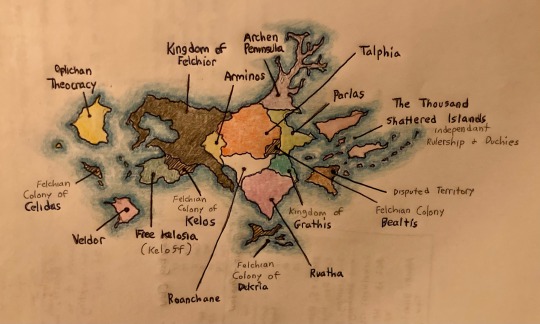
Their characters have just immigrated to a new land from continent Thalos far to the west.
I haven’t named this new continent yet, but I’ve divided it into countries.
The port they landed at, Cape NiMinos, also known as Queensport, is in the country of Felchior.
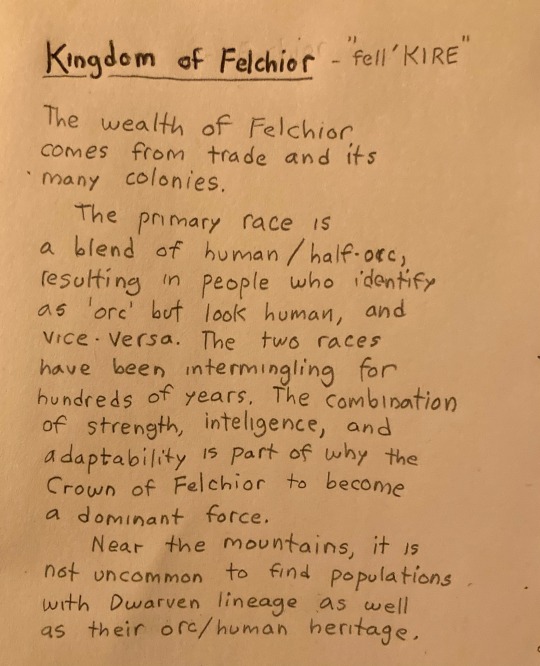

The population of Felchior are a fairly hardy stock, hailing from mixed lineage of human, orc and dwarf. They call themselves Fels, or more formally, The People of the Felchion Crown.
Elves are rare in Felchior, the most grand forests were felled centuries ago for timber. The new forests are simply not expansive enough for Elves. Most of them emigrated to Arminos, Talphia, and western Roanchane.
While the Crown of Felchior claims dominion of the land and underlands of their country, the Dwarf population pays lip service to that rulership.
The further one gets from central Felchior, the more independent the Dwarf underlands get. By the time one reaches the Felchior/Talphia border, a mountainous region, the Dwarves claim that underland and topworld as property of their kingdom.
This leads to diplomatic missions, and periodic skirmishes between the Dwarves and the Fels. The boundary between Felchior and Talphia is constantly in flux, with the mountains on both sides of the borders being claimed as Throdin, country of the Dwarven Great King.
While this irks the Felchian Crown, the Talphian Rulership has no such issues, and refers the the mountains as the country of “Dwarfland.”
RACES OF FELCHIOR.
I figured it would be good to decide how common various races were. The current party involves an Elf, a Dragonborn, a “jackal-humanoid thingamabop,” and the jackaloid’s goblin servant.
As they get gather from cities, they’ll attract more attention.

1 note
·
View note
Photo
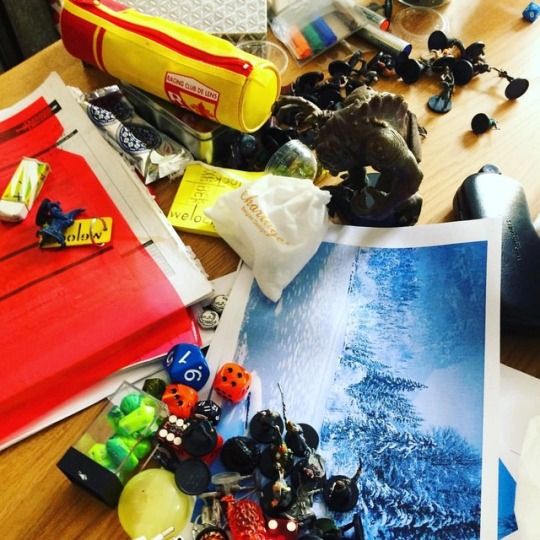
#thedayafter #thegame#roleplaying #warhammer #theenemywithin #campaign #empireinflames #eif #dwarfland #khadarkhalizad
#thegame#campaign#dwarfland#roleplaying#eif#theenemywithin#khadarkhalizad#thedayafter#empireinflames#warhammer
0 notes
Text
Notes Transfer - Dragonesques
In Restem: Crocodiles and Giant Crocodiles.
In Díí: Dimetrodon (dréekosi, from draakontos)
In Firbolg land: dórokontos - Drakes
In West: dóorkontos - Giant Strider
Tan Oroks? - daarkontos?
in Dwarflands: T-rex, baby!
In Thg/Dtu - Hadrosaurus (with feathers)
In Hest: Giant Lizard
In Centaur?: *túurhánþaz - Deinonychus?
Dwarflands: *tarkhónth - Brontosaurus? Three descendants.
PrAcq: tsärkoentas Five descendants?
PrInf: draakóntos? Six descendants?
PrAur: drrka/ont/o/as. Descendants Arkr and Knku
In YuanTi: Naga Spirits?
0 notes
Photo

dwarfland #129 wizard concept
6 notes
·
View notes
Text
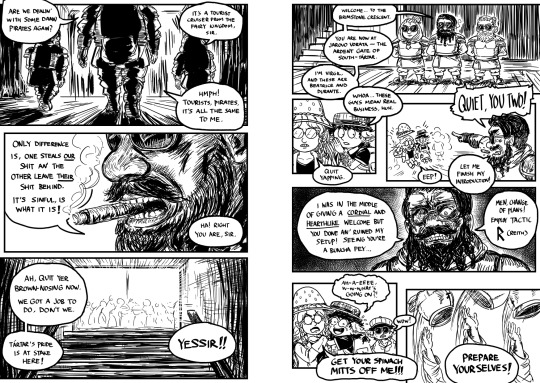
follow-up on previous post, still working on the goblins on dwarfland tour
3 notes
·
View notes
Photo






Creating Disneyland Was Like Building a Brand New City Even Magic Kingdoms need urban planners. BY JESSICA LEIGH HESTER SEPTEMBER 19, 2018
source https://www.atlasobscura.com/articles/urban-planning-disneyland?
“The Disney theme parks are chock full of amusements, rides, and restaurants, but they’re also small cities that must contend with deliveries, trash, and a steady stream of both employees and visitors. No kingdom, however magic, is exempt from all sorts of pesky needs and demands. People need to be able to move from one place to another, they have to refuel, and, every so often, they’ll need to relieve themselves. Ideally, they’ll accomplish all of this efficiently, and without getting frustrated or dizzyingly lost.To cater to these less-than-wondrous requirements, the parks are, in reality, self-contained marvels of metropolis-building. Disneyland Park in California has a reliable transit system—the first monorail in the Western Hemisphere, which debuted just as many cities were expressing their love of cars and traffic by laying down ribbons of highway. Walt Disney World Resort, in Florida, innovated with trash: Cans are spaced precisely 30 feet apart, and all of them empty via underground tubes so that family vacations aren’t interrupted by vehicles hauling sun-baked garbage juice.None of this happened by accident. Long before the parks were magic, they were conceived as two-dimensional representations, or as miniatures. Like many city planners, Disney’s chief urban brainstormers and engineers first imagined the parks’ shapes, structures, and logistics, on a small scale.
In the new book Walt Disney’s Disneyland, architecture historian Chris Nichols retraces the long road from idea to the media empire’s first park. To hear one animator tell it, Disney first hatched his idea for a play land while plugging away on Snow White and the Seven Dwarfs in 1937. At the film’s premiere, Disney himself made it a kind of reality superimposed atop Los Angeles. Guests strolled along the median of Crescent Heights Boulevard, which had been reimagined as “Dwarfland” and crowned with a charmingly ramshackle cottage and a cast of costumed characters.
Disney spent years collecting ideas and measuring other places against the one he was building in his mind. He scrutinized Beverly Park in Los Angeles, as well as lavishly ornate miniature rooms and reconstituted historic villages. He combed Henry Ford’s Greenfield Village, near Detroit, and Madurodam, a tourist attraction of miniatures in the Netherlands. He visited Colonial Williamsburg, where costumed reenactors roamed. Then he dabbled. Disney assembled a team of engineers and designers to plan and build a miniature world he dubbed Disneylandia. He imagined diorama scenes built inside train cars, chugging along and showcasing slices of Americana. He brought a prototype—an eight-foot-long hearth scene he called “Granny Kincaid’s Cabin”—to the Festival of California Living in 1952. Visitors crowded around to peek inside, but Disney’s enthusiasm for a full 21-car caravan ultimately evaporated. He thought the project lacked pizazz, so he cast it aside.
Still, Nichols writes, Disney was consumed by the prospect of his own park. Radio and television host Art Linkletter, who traveled with Disney to Copenhagen’s Tivoli Gardens amusement park in 1951, recalled that Disney viewed the trip as reconnaissance. “He was making notes all the time about the lights, the chairs, the seats, and the food. I asked him what he was doing, and he replied, ‘I’m just making notes about something that I’ve always dreamed of, a great, great playground,’” Linkletter remembered. Nichols reports that Disney had blueprints drawn up, and began appealing to local officials for the green light to break ground in California.
In 1952, he made his case to the Burbank City Council, for a 16-acre site between Griffith Park and his studio in Burbank. They didn’t go for it. “We don’t want the carny atmosphere in Burbank,” Nichols recounts one lawmaker saying. “We don’t want people falling in the river, or merry-go-rounds squawking all day long.” The setback got Disney thinking even bigger.
In 1953, he closed a deal to buy a swath of land in Anaheim, speckled with orange groves and walnut trees, for $4,500 per acre. Linkletter thought it was too remote to draw a crowd, but Disney forged ahead.
It was like building a new city from the ground up. The site had to be graded. Pipes had to be installed. Clay had to be packed tight over the porous ground, and railroad track had to be laid around the perimeter. When it came to the layout of the park itself, Disney envisioned the hub-and-spoke street grid that underpinned major cities such as Detroit and Washington, D.C. “I want a hub at the end of the Main Street,” he said. “The other lands will radiate, like the spokes of a wheel … Disneyland is going to be a place where you can’t get lost or tired unless you want to.”
Designers and landscape architects their hands full with models and maps. They diagrammed rides’ interiors and made small models, while Disney recruited artists who had worked on films to paint backdrops. The company retained Renié Conley, who had received an Academy Award for her costume design for Cleopatra, to outfit 10,000 employees. Disney is rumored to have spent more than $500,000—an eye-popping figure at the time—on trees and shrubbery alone.
Then, finally, in July 1955, the visitors came. As many as 15,000 people were invited to opening day, Nichols reports, but roughly twice as many showed up—and a record-breaking 90 million people tuned into a television special about the opening festivities.
If visitors picked up maps to help them navigate the new park, they could see at a glance the payoff of years of planning: the shops and restaurants lining Main Street, the plazas, the wide avenues. Once a few opening day kinks were worked out, the park became the destination it is today. The magic city had finally sprung off the drawing board and into real life.”
0 notes
Text
RT @MistressBAudrey: @FeministMage @WantsBlue @Picky_Nyki @trans_priestess @Nespresso821 @dwarfland @JennSmith64 @BigDTwo @PocketHanky @Godstopper1981 @TranimeGirl Tranime is independent from collectivism/tribalism. Despite what some trans activists have said about her, i have never seen her once throw trans people under the bus. She is more liked by GC than the trans side, but that doesn't mean she'll call herself a "he" for them. 🖤
Tranime is independent from collectivism/tribalism. Despite what some trans activists have said about her, i have never seen her once throw trans people under the bus. She is more liked by GC than the trans side, but that doesn't mean she'll call herself a "he" for them. 🖤
— ♡ ♡ вєтнαиу αυ∂яєу ♡ ♡ (@MistressBAudrey) January 23, 2019
from Twitter https://twitter.com/TranimeGirl February 17, 2019 at 02:06AM via IFTTT
0 notes
Text
A Different Kind of Online Game
I had my first session with my Roll20 group yesterday. All in all, it went really well! There’s 5 of us total, including the DM. We’re playing 4E (part of the reason I applied for the game, because I didn’t want to buy another player’s handbook/learn a different edition), and I’m playing a dwarf paladin.
The first session was just character creation and world building, but it was nice. The other players all seemed friendly, if tired. Our game is early in the morning for most of us because our DM is in Tokyo. It was kinda neat going from being one of the more knowledgeable players in a group to being the new guy. The DM made sure I knew what I was doing when I was making my character. I almost wanted to say that I probably knew enough to be okay without the walkthrough, but I appreciated the effort, and despite my pride in my “knowledge,” I am still new to the game and could really use all the help I can get. We went with a point buy/point array for our abilities, so I just picked the array for my dwarf (it’s 16, 14, 13, 12, 11, 10; 4th edition really does not like you having negative ability modifiers, apparently). I was honestly glad to do this, because I didn’t want to get a bad roll and be forced to put a low score in Intelligence, one of my dump stats as a paladin. This was from a RPing perspective: my character’s not the smartest person, but I didn’t want her to be unintelligent either. In all honesty, it would’ve been more challenging to play her as a bit dumb, and that could’ve been fun. Maybe I’ll get to do that with another character in the future.
Our game’s in a homebrew fantasy setting where the eladrin empire runs things. We got talking about the different races and their places in the world. Dwarves aren’t super widespread outside their main city/area (which I’m calling “Dwarfland” for now, but will surely get a better name down the line), so my character stands out a bit. Then again, we all stand out a bit. We have a tiefling cleric, with tieflings being the race the eladrin ousted to establish their empire, and she is a good tiefling, in contrast to most of her race. We have an eladrin witch, who would quite probably be hunted down by other eladrin if they learned the truth of her magic. And we have an incredibly strong but not too bright human fighter (20 Str, but 8 Int), who left the farm to become a pit fighter. It’s an odd group, but I like that.
We’re having our 2nd session next week, and I’m already super excited about it. I’m nervous, having never played a game on Roll20, and still having little D&D experience, but I’m excited nonetheless. I’ll probably share more about my Roll20 character as we get closer... unless I forget and stay inconsistent with updating, as I’m wont to do.
#dungeons and dragons#d&d#d&d 4e#4th edition#roll20#first time#dwarf paladin#a different kind of online rpg entirely altogether
0 notes
Link
Games Have Too Many Words: A Case Study.
The following blog post, unless otherwise noted, was written by a member of Gamasutra’s community. The thoughts and opinions expressed are those of the writer and not Gamasutra or its parent company.
In this chapter, I unwisely critique the work of my betters.
I recently wrote an article about how video games have too many words. We designers don't properly edit our writing to make sure our words are worth a player’s time reading them.
I want to do a case study where I go through a wordy game, step-by-step, and show what it's doing right and wrong and how it could be doing better. Most game criticism frustrates me. It tends to deal with generalities and floaty ideas, instead of dirtying its hands with specifics that could actually help make for better games. This is my chance to egotistically provide a different approach.
This breakdown will be long and gritty, but I'll try to include a lot of solid pointers. I'll throw in some jokes along the way.
The Subject
Let's look at the very beginning of Pillars of Eternity, developed by Obsidian and released in 2015. This game was a huge hit, critically and financially, taking advantage of a shortage of quality Baldur's Gate-style, gritty, isometric-view, story-heavy titles.
I really wanted a game like that, so I bought it. I finished it in a little over 20 hours. The combat was fine, though really chaotic and hard to follow. (The best description I read was "clusterf***y".) The story was OK, but the game is loaded with words, many of them written by Kickstarter backers. I ended up getting through all the conversations in the back third of the game by typing the '1' key as fast as I could.
I did play Pillars until the end, which is rare for me. Overall, it was pretty good. It made a lot of money, and the crowdfunding for the sequel is doing quite well.
I don't usually like being negative about the work of other sincere, industrious creators. Luckily this game got enough cash and acclaim that its creators can comfortably ignore the nattering of a non-entity like me.
This is how I picture the devs of Pillars of Eternity. They walk everywhere with big clip art watermarks floating over their chests.
"So What's Your Complaint?"
Too many words.
Pillars of Eternity wants to have a really elaborate world and story, which is fine. It wants to have a creative game system, with new, innovative sorts of character classes and spells, which is great.
However, it doesn't do a good job of communicating stuff to the player, because there's no editing and care in giving out information. The game just floods the player with text, important bits buried in gushes of irrelevant detail, practically training the player to think that the words aren't really important. (Again, I played a huge chunk of the game without reading anything but the quest log.)
To illustrate this, I'm going to go, step by step, through the introduction and character creation, the stuff anyone who tries the game is sure to see. Let's see what the game thinks is worth the player's time and how good a job it does splitting up vital knowledge from static.
"So What? You're Just Scared of Words, You Sub-Literate?"
No, I have a problem with the pacing. The human brain can only absorb so many random facts about game systems and lore at one sitting. This stuff needs to be carefully paced out, or it'll just slide off of the brain.
But character creation in this game floods the player with tons of facts, both about the game and the world. I came out of it feeling numb and confused, and almost none of it stuck.
So. You start the game. You pick your difficulty. And then you begin the eleven (!!!) steps of character creation.
I. Introduction.
A pretty graphic and some basic text saying what is going on (you're on a caravan going to some fantasy town, you feel sick), read by an old guy. About 140 words. It's fine.
II. Pick Your Sex
And now the troubles begin. You need to choose whether you are male or female. Here's a description:
Describing the sexes is about 160 words total. But look, it mentions a bunch of different countries. Let's mouse over one of them and see what their deal is.
Yikes! That's a lot of words. All the descriptions together are about 330 words, much of it references to random game locations the player has no knowledge of. "Ein Glanfath" "Dyrwood" "Glanfathan" "Ixamitl" "Naasitaq" How can anyone get anything coherent from this tangle? This is literally the second thing the game shows you.
Seriously, try this: Read the description of "Eir Glanfath" above. Then close your eyes and count to ten. Then say everything you recall about Eir Glanfath. I'll bet you retained very little. And that's setting aside whether this stuff is actually necessary to play the game. (Not really.)
And, worse, it's all irrelevant to the actual choice the player has to make, because the vast majority of players will know whether they want to play a man or a woman before they even launch the game. If a woman only ever plays female characters, telling her, "The men of the Derpaderp Tribe of Sirius XII are in charge of all of their basket-weaving!" isn't going to turn her head around.
My Friendly Suggestion - Go through all these random facts and see if there are one or two of them the player MUST know. Pluck them out and put them in the Introduction. Cram the rest of the lore in books the player finds in the game world. Then make Male/Female be a toggle in the next screen.
III. Pick Your Race
OK, we're into solid fantasy RPG territory now. Here are six races to choose from:
You've never heard of three of the races. This is good. Pillars's desire to create new, weird things is one of its good points. Each race has about fifty words of description:
Now, this is a description of a "dwarf." But, if you have even the slightest familiarity with fantasy, you know what we're talking about here: Standard-issue, Tolkein dwarves. Short. Stocky. Like digging holes, gold, and ale. Grumpy. Scottish accents. We get it. All you need to say here is, "Strong, durable, great warriors."
For each of the races, the description mainly says the lands they live in. Let's be clear. This is useless information. If I tell you dwarves come from New Jersey, whether or not you've heard of New Jersey, this tells you nothing about whether you want to be a dwarf in your adolescent power fantasy.
It's a total cliche to say, "Show, Don't Tell," but this is a PERFECT example of why this is a key concept in writing. If I say, "Dwarves come from New Jersey," and you've never even heard of New Jersey (or dwarves), you won't care. But if you go to New Jersey, look around, and see nothing but dwarves, you'll instantly be all, "Oh, I get it! I'm in Dwarfland!"
But it gets trickier. This is the first choice you make that has actual impact on the gameplay. There are six statistics in the game, and your race affects what you start with. Each statistic description is 50 more words. Let's take a look at one:
What "Might" means is important information. The player needs this. This text needs to be punchy and clear. Something like, "Improves damage from all attacks. Gives a bonus when healing. Helps intimidate people in conversation."
And this description does that, but messily and with lots of extra words. Pillars tries to do a lot of things differently from other RPGs, so it needs to be extra-clear about the surprising stuff. Having the strength skill also improve spells and healing is neat, but it's also really unusual. ("Dwarves are better wizards? Wut!?")
My Friendly Suggestion - Editing pass. Shorter and clearer. Ask, "Why does the player need to know this?" If you don't have a good answer, save this lore for much later.
IV. Pick your Sub-Race
This is where the seriously over-designed quality of Pillars starts to show up. Picking a race isn't enough. You have to pick your sub-race:
So about 160 words (not counting rollover text), to learn about the woods dwarves and the mountain dwarves:
None of this lore has anything to do with the actual game.
What bugs me here is that this choice has gameplay significance. One choice gives you resistance to Poison and Disease (though you have no idea how serious these conditions are or how often they appear in the game), and one gives you a bonus against "Wilder" and "Primordial" creatures (though you have no idea what on Earth those are, let alone how often they show up in the game).
Giving a player seemingly high-impact decisions with no ability to tell which one is correct is stressful and confusing.
My Friendly Suggestion - Ditch sub-races. Instead, give Dwarves BOTH of these bonuses. This creates more distinction between the races and getting multiple bonuses helps the player feel more powerful instead of confused and stressed.
"Cutting Out Lore? What Is Your Problem With Lore In Games, You Jerk?"
Lore in games is great, as long is it's not thrown at the player too quickly and without any gameplay context that makes it mean something.
If you love lore, I want you to get lore, but in a way that spares the people who find huge dumps of it grueling. There are ways to make everyone happy!
Anyway, let's keep going. There's a LOT more screens to go.
V. Pick Your Class
Hokay! At last, this is the big one! This makes a huge difference in your play experience. Here are your eleven choices:
One of the coolest things about Pillars is that they tried to make some weird classes unlike anything in other games. The cost of creativity, however, is that you have to be extra-careful when explaining to the player the weird stuff they've never seen before.
When I started the game, my eyes were instantly drawn to "Cipher". That sounds neat! And here is the description ...
Yikes.
The main description of the class is four long sentences, but only the second sentence actually says much about what the class does. Then a very vague description of the powers, which involve something vitally important called a "Soul Whip," with no explanation of what that actually is. Then a bunch of algebra.
That's about 120 words, for one class. You have to go through all of it to get a vague idea of how the class plays. The other ten class descriptions are comparably complex.
This is just too much stuff to muck through, too early, for a choice so important to the play experience. Bear in mind that we are still less than halfway to actually playing a game.
My Friendly Suggestion - For each class, only show the stat bonuses and two or three carefully written sentences describing what it's like. Move all the weird lore and mathematical formulae to a different tab that can be opened by those who care. When the player starts using the class in the game, bring up some tutorial windows saying the key details of how to actually use it, like what a "Soul Whip" is.
VI. Pick Your Class Details.
If you're a priest, you have to pick your god. If you're a caster, you have to select a spell or two from the starting list. For the Cipher, the list looks like this ...
The spell descriptions look like this ...
Again, a ton of reading, referring to statistics, distances, statuses, damage amounts, damage types, etc. that mean nothing because you've never actually played the game.
My Friendly Suggestion - Lose this screen entirely. Pick one basic, useful ability (the best one) and give it to the character automatically to get through the tutorial. Then, after the first bunch of fights, have the player meet a trainer and be able to choose new abilities in an informed way.
VII. Edit Your Character Attributes.
Figure out how many points of Strength, Constitution, etc. you have. The game, to its credit, says which ones are most important for your class. Standard RPG fare.
VIII. Pick Your Culture
IF YOU'RE JUST SPEED-SCROLLING THROUGH THIS ARTICLE, STOP HERE AND READ THIS!!!!
Yeah, I know you aren't reading all of this. This post is wayyyyy too long and gritty and nit-picky and tedious. But reading this article takes much less time than actually picking through all of these windows in the game. Which is too long. That is my main point. Now scroll to the end and call me an idiot in comments.
Anyway, yeah, pick some country you're from ...
Each of the 7 contures has about 70 words of description.
None of this has anything to do with playing the game.
This is the most unnecessary step in the whole process. When making an RPG character, you need to build two things: Its stats/abilities and its personality.
Knowing your character is from "The White that Wends" tells you nothing about its abilities, and it's a lousy way to determine his or her personality. If you read the description of "The White that Wends," and learn that people from there are mean and selfish, that's still not the way you want to player to create a mean, selfish character. You do that by giving play options in the game that are mean and selfish and letting the player pick them. Show, don't tell.
My Friendly Suggestion - Lose it entirely.
IX. Pick Your Background.
Choose from one of nine backgrounds.
The main thing this affects is that, every once in a while, it will open up a new dialogue option. This never makes a big difference.
My Friendly Suggestion - There's a real lost opportunity here. Once again, "Show, Don't Tell." Instead of having me declare that my character is a Slave or Aristocrat or whatever, why not, once you’re in the game, make every conversation option for all of these different nine backgrounds available to me when the game starts.
Then, if I keep making the "Aristocrat" pick, start removing the other options, so that I end up always talking like an Aristocrat. Then my character's personality emerges organically from the sort of dialogue choices I make in the actual game.
X. Choose Appearance and Voice.
Standard appearance editor and list of different voices. It's fine.
XI. Choose Your Name.
Gladly.
XII. The Game.
And, finally, the games starts with the tutorial. Which begins with a long conversation. Which I barely pay attention to, because my stupid brain is tired.
It's all way too much. Too many words, too many irrelevant choices, exhausting when it should be informative. Not that they will listen to me, but it might be an improvement to look for in Pillars of Eternity 2, because the market is not what it was in 2015.
"But Who Cares? The Game Was a Hit, Right?"
The real test of how good a game it is, is not how it sells, but how much its sequel sells. And it is entirely fair to ask what business a pissant like me has criticizing a hit game written by a bunch of big names.
Let's leave behind the idea of craftsmanship and a desire to always keep improving our work.
Lately, sequels to hit RPGs have been selling far worse than their predecessors. Obsidian's successor to Pillars, Tyranny, by their own words, underperformed.
Also, I looked at the Steam achievement statistics for Pillars of Eternity. According to those, fewer than half of players finished the first chapter. Only about 10% of players completed the game.
Now granted, this is not unusual. Most games remain unfinished. But that still invites this question: If the vast majority of players didn't want to experience the Pillars of Eternity they already paid for, why think that they will want to buy more?
Everyone should keep improving, if just for their survival in this mercilessly competitive business.
Video games are a new art form, and there is still so much we have to figure out. That's the terrifying and awesome thing about making them. And now, having already written way too many words, I will take my own advice and cease.
###
The author sells his own flawed, wordy, old-school RPGs at Spiderweb Software. He opines on Twitter.
0 notes
